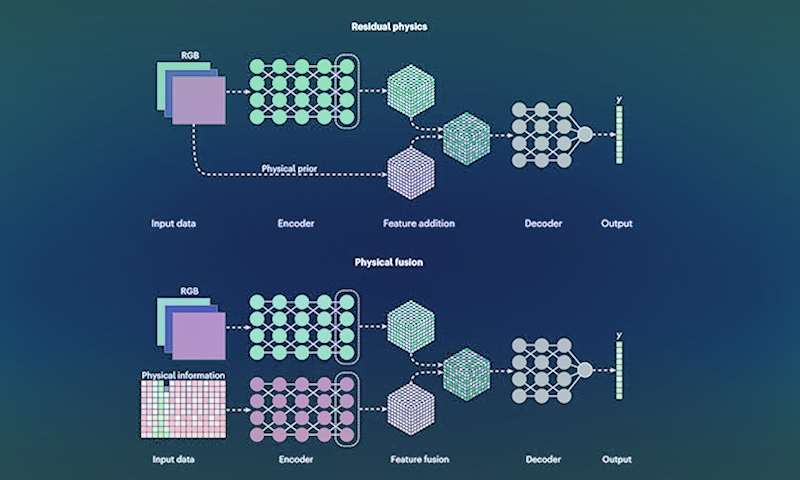
The Power of Hybrid Computer Vision: Combining Physics and Big Data
In a groundbreaking leap towards more intelligent and versatile artificial intelligence (AI), researchers from UCLA and the United States Army Research Laboratory have unveiled a remarkable approach that fuses the realms of physics and big data. This cutting-edge methodology aims to revolutionize computer vision technologies, elevating their capabilities to perceive, understand, and respond to real-time environments. By combining physics-based awareness with data-driven techniques, AI-powered machinery, including autonomous vehicles and precision robots, gains a new level of intelligence and efficiency.
Computer vision serves as the window through which AI perceives and interprets the physical world by decoding intricate data and inferring properties from images. Although these images are inherently governed by the physics of light and mechanics, traditional computer vision techniques predominantly rely on data-driven machine learning for performance optimization. Simultaneously, physics-based research has sought to unravel the underlying physical principles behind various computer vision challenges.
Integrating an understanding of physics into neural networks, mimicking the human brain with billions of nodes, has been a formidable challenge. These networks process massive image datasets until they gain comprehension of what they "see." Nevertheless, recent strides in research have identified promising paths to instill physics-awareness into robust data-driven networks.
The researchers' breakthrough study, published in Nature Machine Intelligence, introduces a hybrid methodology that harnesses the strengths of both physics and data-driven AI. By combining deep knowledge gleaned from data with the real-world insights of physics, a new breed of AI emerges – one that possesses enhanced capabilities and intelligence.
By incorporating physics into AI data sets, researchers tag objects with additional information, such as weight and movement speed, similar to how characters are defined in video games. This augmented data empowers AI to grasp a deeper understanding of the objects it encounters, enabling better predictions and interactions with its surroundings.
To imbue cameras with the ability to sense physical properties, researchers propose running data through network filters. These filters encode physical attributes into images, enabling AI to perceive and react to scenes in a manner closely aligned with the laws of physics.
The fusion of physics into AI's loss function allows the technology to leverage the principles of physics while interpreting training data. As a result, AI can extract more meaningful insights from observations, leading to better-informed decisions and actions.
The success of this dual modality approach has already showcased its potential to enhance computer vision in a multitude of real-world scenarios. For instance, AI-powered machinery equipped with this hybrid approach can more precisely track object motion and generate high-resolution images, even in inclement weather conditions.
With continuous progress in this hybrid AI approach, deep learning-based AIs could even venture into learning the fundamental laws of physics autonomously. This novel advancement has immense potential to unlock unforeseen possibilities in various industries, including autonomous vehicles, robotics, healthcare equipment, and beyond.
The union of physics and big data in the realm of AI-powered computer vision is a revolutionary milestone that brings us one step closer to achieving human-like perception and intelligent interactions with the world around us. The research from UCLA and the United States Army Research Laboratory paves the way for a new era of hybrid AI, where the combined power of physics and data-driven techniques transcends the limits of traditional computer vision. As we witness the transformation of AI-powered machinery, we anticipate a future where technology seamlessly integrates with our physical reality, empowering us to drive safely, perform precision tasks, and unlock unparalleled advancements in human-computer interactions.
